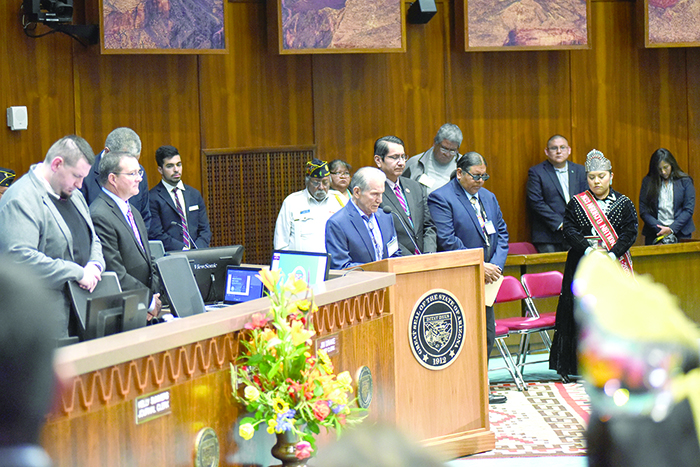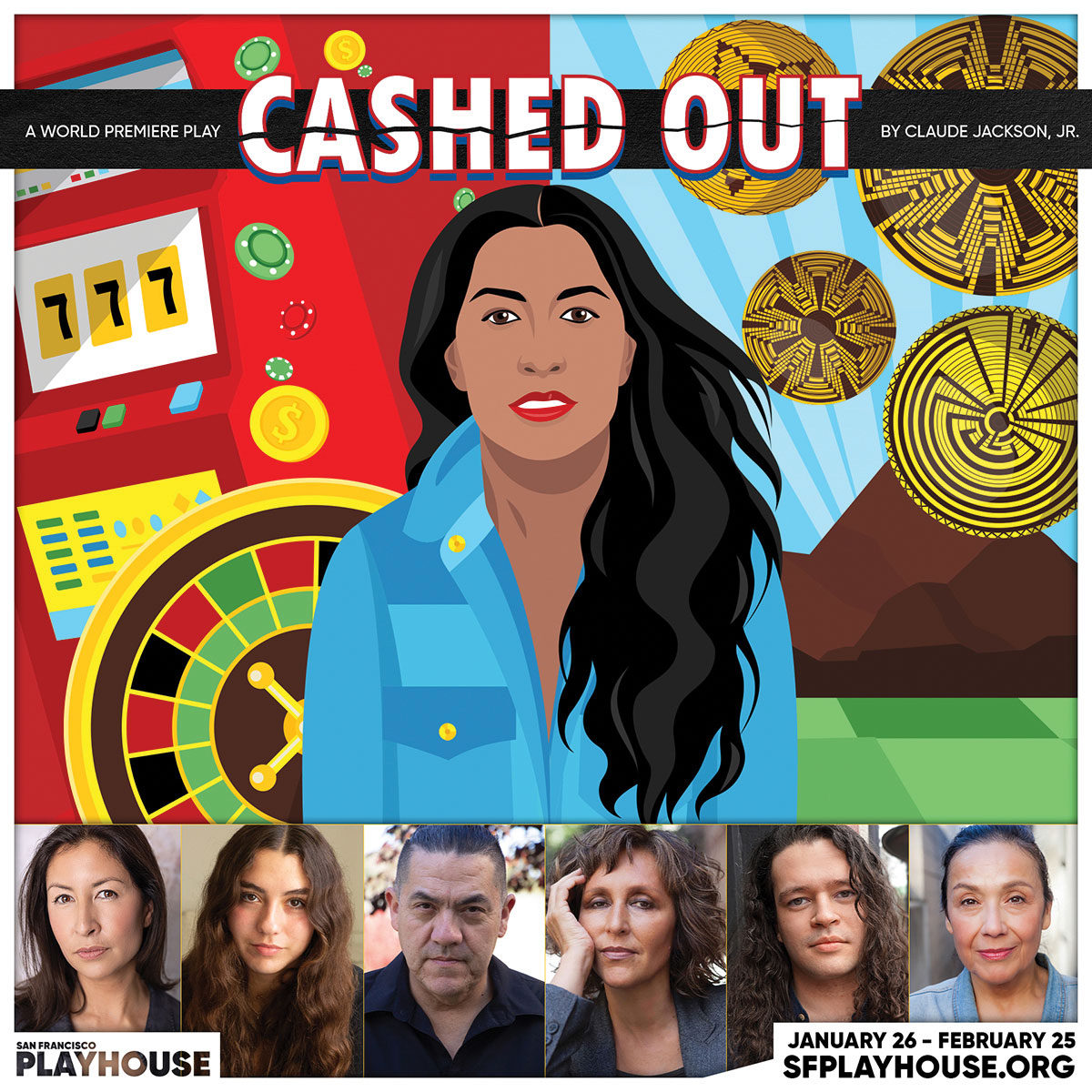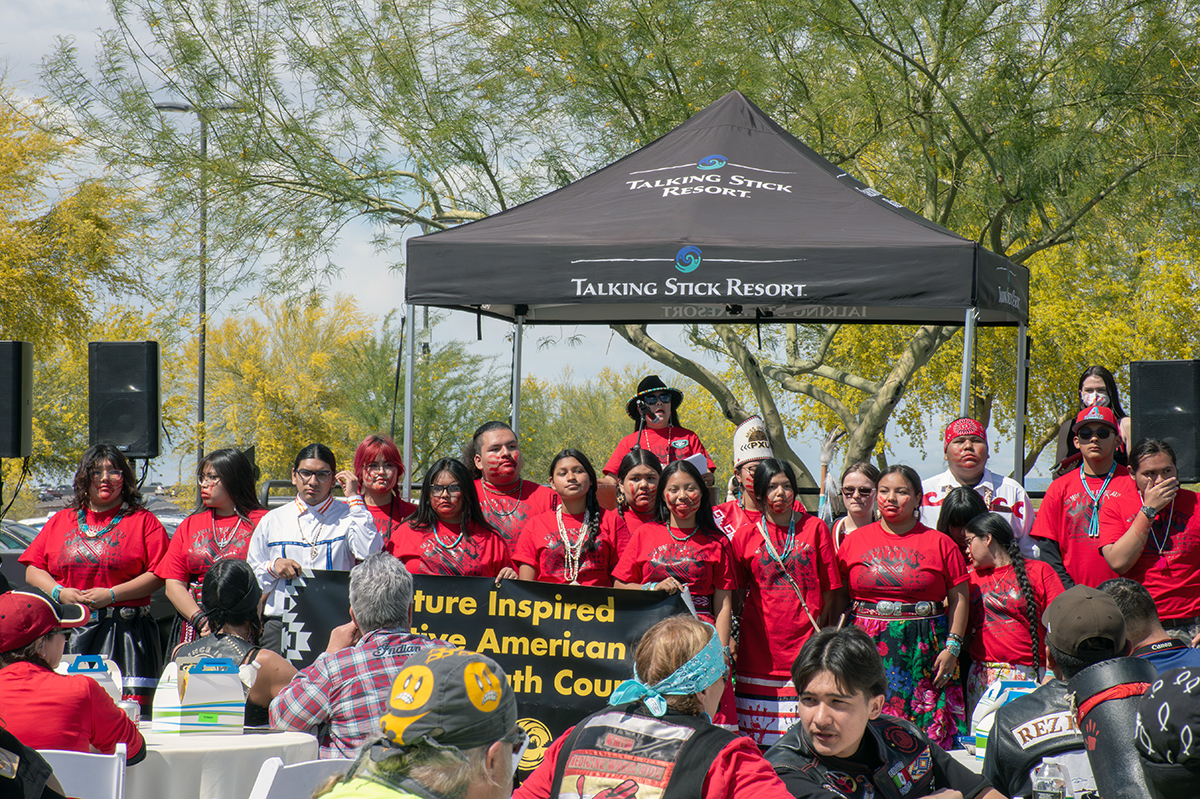VIEWS: 1755
February 13, 202025th Annual Indian Nations and Tribes Legislative Day at Arizona State Capitol
The Arizona State Capitol was packed on January 15 for the 25th annual Indian Nations and Tribes Legislative Day.
Each January, the state legislature hosts the event either at the Arizona Senate gallery floor or the Arizona House of Representatives gallery floor. This year’s event was held at the House in a joint protocol session that included brief opening remarks by Speaker of the House Rusty Bowers and Senate President Karen Fann.
The event was established by the Inter Tribal Council of Arizona in 1995 and gives tribal leaders and members of the public the opportunity to meet with elected officials that represent their districts. Most recently, the event has been hosted by the Arizona Governor’s Office on Tribal Relations.
Each year, tribal leaders from three of Arizona’s 22 tribal communities are selected to deliver a State of Tribal Nations Address. Tohono O’odham Nation Chairman Ned Norris Jr., Navajo Nation President Jonathan Nez and Havasupai Tribe Vice Chairman Matthew Putesoy were this year’s speakers.
Salt River Pima-Maricopa Indian Community Council member Tom Largo gave an invocation. The Ira H. Hayes Post 84 American Legion posted the colors, and Miss Indian Arizona Audriana Adzaan Mitchell led the Pledge of Allegiance.
Nez gave his address first, followed by Putesoy and Norris. Each lasted between 12 and 22 minutes.
Nez congratulated state-level elected leaders who have recently completed the first year of their term. “Our administration believes that change presents opportunity, the opportunity to work together and strengthen and empower our people in the community,” he said.
One of Nez’s announcements was advancing renewable energy in the coming years in the form of solar energy, which he said will create jobs.
Putesoy talked about uranium mining and the potential damage to the Havasupai Tribe’s drinking water. “Contamination would be a death sentence to my community,” he said.
The tribe recently began building its own high-speed internet connection, and Putesoy shared some of the benefits and its importance moving forward. He said the tribe is working on a high-speed charter high school.
“Broadband bodes substantial promise to providing crucial services to our tribal members,” he said.
Norris acknowledged the importance of the annual event. He also talked about the history of the Tohono O’odham Nation and its sister tribes. Norris said T.O. has 35,000 tribal citizens, with 2,000 tribal citizens on the Mexico side of the border.
Norris encouraged tribes to closely work together on issues that affect all of them, like water rights, public safety and economic development.
“We need to work together to protect our rich cultural heritage, which defines who we are,” he said.
Elected tribal leaders from across the state were in attendance, including SRPMIC President Martin Harvier. Some elected state officials were also on hand for the joint protocol. Arizona State Representative and Minority Whip Athena Salman and Arizona State Senator Juan Mendez posed for a photo with Largo, Harvier and members of the Young River People’s Council.
After the addresses, lunch was provided on the Senate Lawn, where multiple Native organizations had set up informational booths as part of the Resources Fair.
During the afternoon, two informational sessions took place at the Capitol Museum. One focused on elders and the other on missing and murdered Indigenous people, at which Salt River Police Department Chief Karl Auerbach was on the panel.
High school students were encouraged to participate in the Native Youth Know Forum, which went for most of the day and introduced the youth to legislative happenings.







